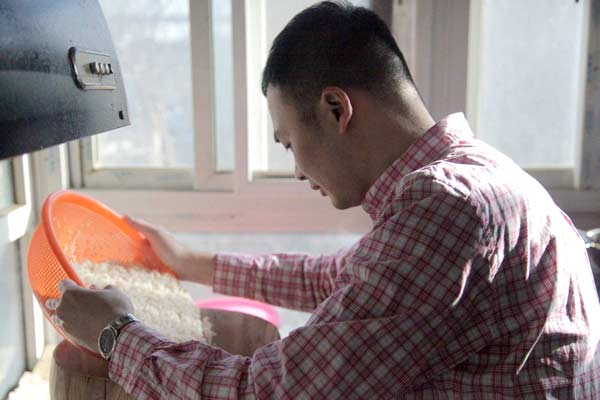Sweet taste of home
 |
|
Liu Hongjun makes rice wine at home. [Photo by Fan Zhen/China Daily] |
|
For more Good Food Diaries |
His mother told him the importance of choosing the right kind of glutinous rice and water. These two ingredients directly affect the quality of the final product.
"The rice has to be round and plump. After you steam it for one hour, it should be quite sticky," Liu says. "If not, it will produce less wine."
Liu has tested several kinds of glutinous rice from the market but even the expensive brands failed to satisfy. "It's not sticky enough."
At home, his mother usually uses the local glutinous rice grown on the terraces right behind their house. The local farmers water the crops with natural springwater and often use natural fertilizers because of financial limitations.
Liu admits he would not have known these "disadvantages" are actually advantages if he hadn't compared the local rice with what is available in the market.
As for water, he has to substitute the springwater that his mother uses with purified water, which fails to achieve the same smooth taste. This has made Liu curious as to why some rice wine tastes so different from his.
"I don't know what type of rice and water they use, but the final products just don't taste like real rice wine," Liu says. "I think the really good ones should look clear and taste mellow and pure."
But his mother's 40 years of experience making rice wine could not be learned overnight. Once he didn't wash the rice properly and two days later the whole jar became moldy and he had to throw it away.
Another time he put the rice onto the steamer and went to chat with friends and forgot the time. The rice became too dry to be used.



















